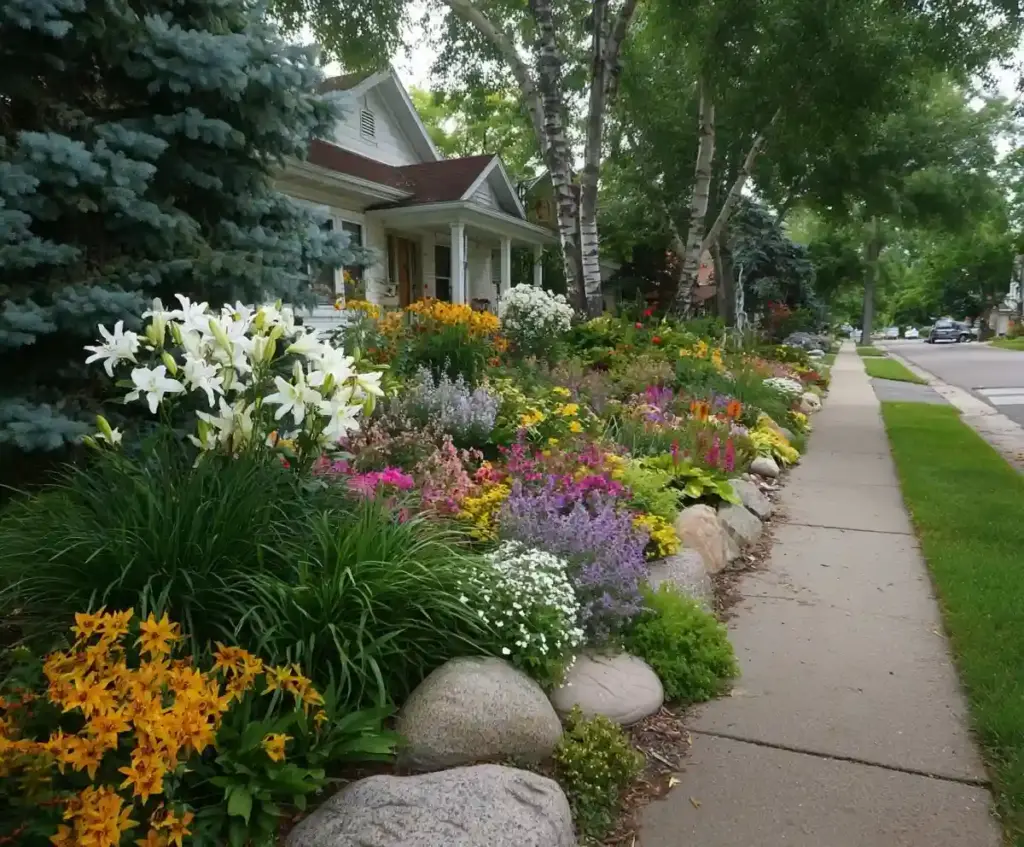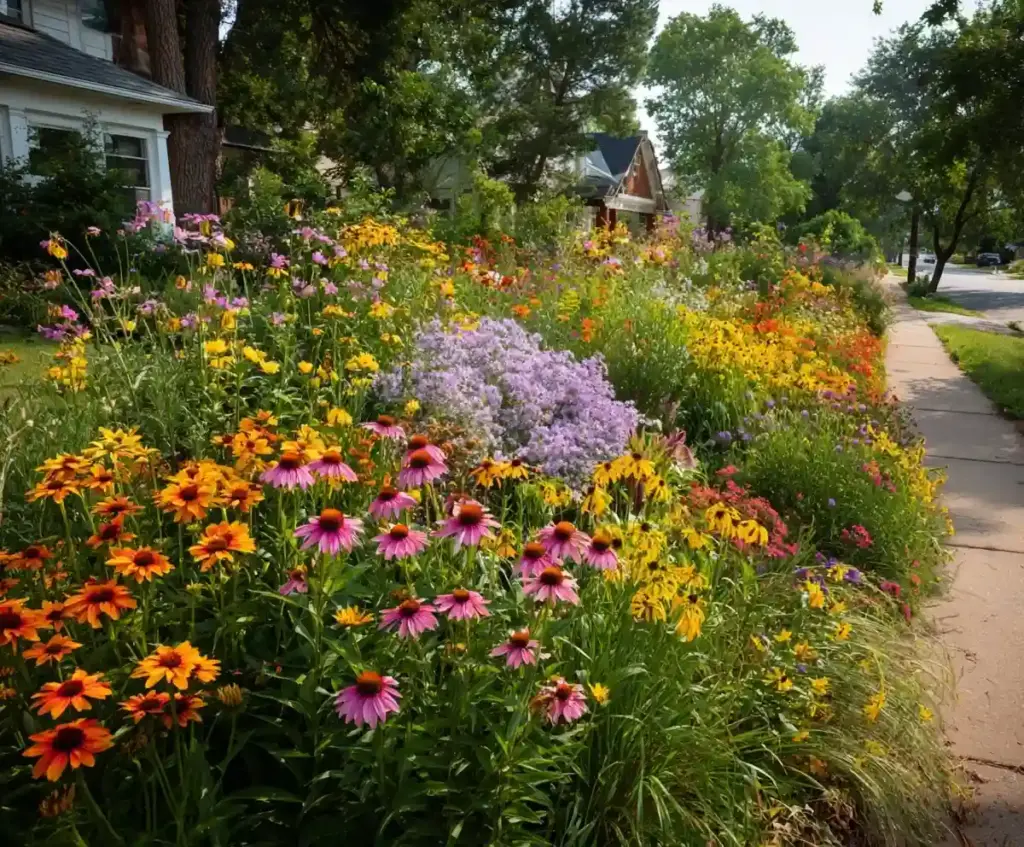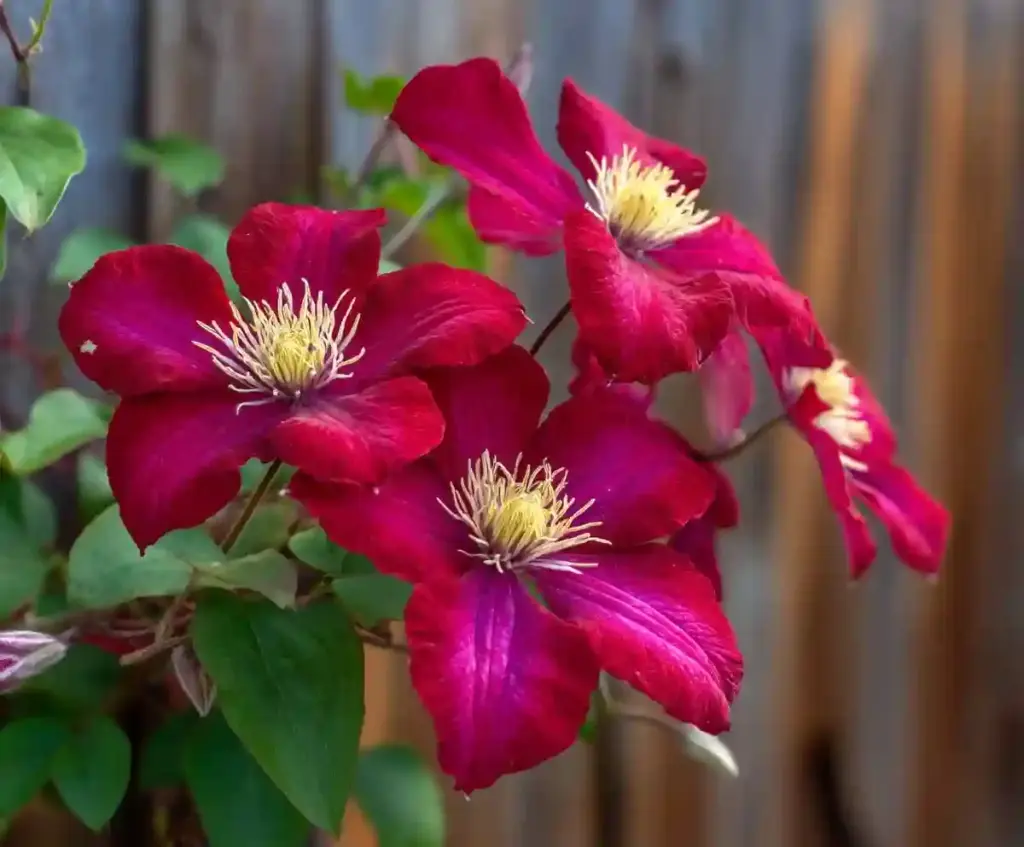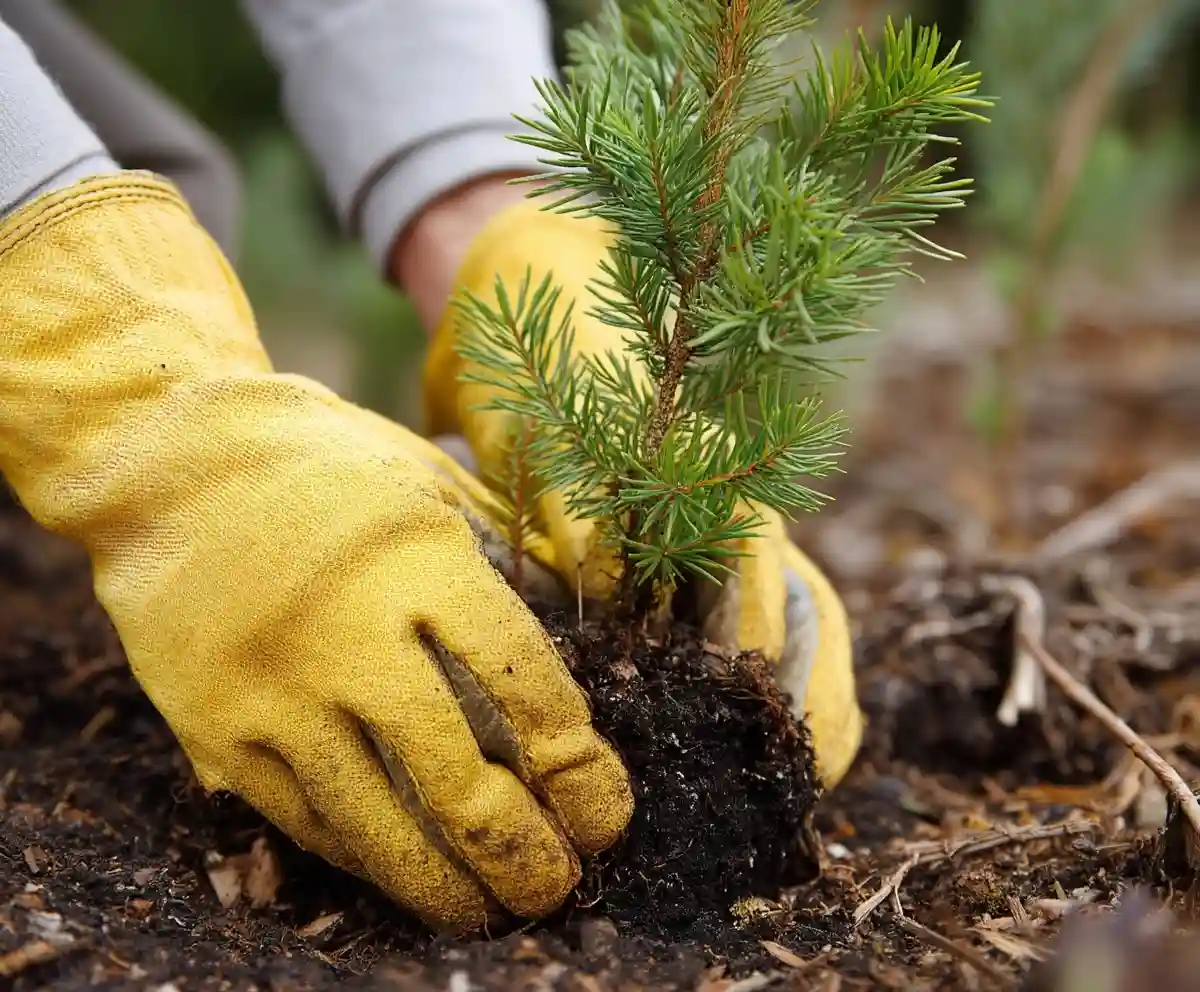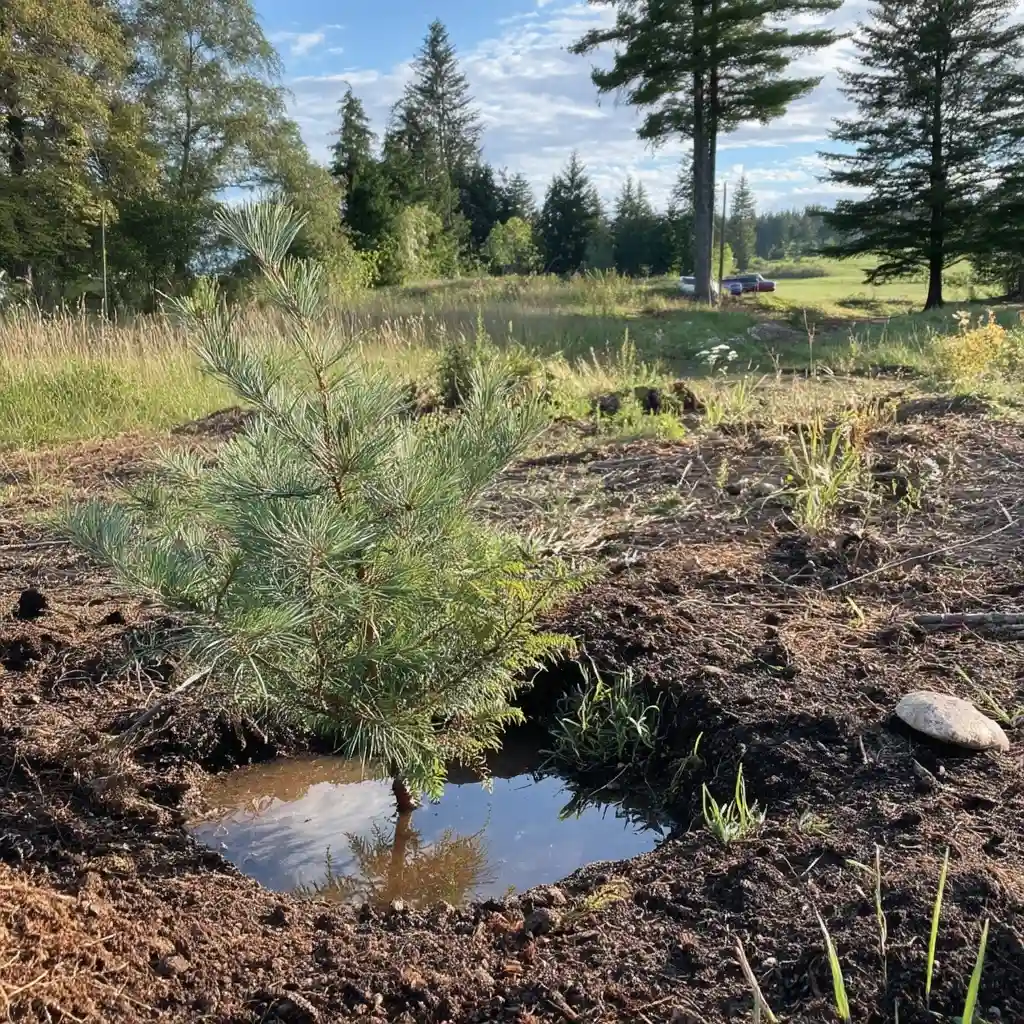Caring for pine trees starts long before you ever water or prune one—it begins with smart planting. Set your pine tree up for a lifetime of health by choosing the right location, soil, and planting method from the start. Pines are naturally hardy, adaptable trees, but their success hinges on the first steps you take in the ground.
Select a planting spot with full sun and well-drained soil, and your pine tree will likely need very little attention in the future. In fact, many mature pines thrive for decades with minimal care—if planted correctly. Whether you’re working with a tiny seedling or a container-grown young tree, good initial choices can eliminate many common issues down the line.
Table of Contents
How to Grow Your Own Pine Trees – Site, Sun, Soil & Drainage Test
The foundation of successfully caring for pine trees is selecting the right location and understanding your soil. Pine trees prefer full sunlight—at least six hours a day. A shaded environment can stunt growth and lead to sparse, leggy branches. Choose a site that offers ample space both above and below ground, especially for larger varieties like Eastern white pine, which need room to stretch both roots and canopy.
Soil Requirements
Pines thrive in loamy, slightly acidic soils that drain well. Avoid clay-heavy areas where water tends to collect, as this encourages root rot. If you’re unsure about your soil type, a basic pH and texture test kit from a garden center can be very helpful.
How to Test Drainage
Here’s a simple DIY drainage test:
- Dig a hole about 12 inches deep and 12 inches wide.
- Fill it with water and let it drain completely.
- Immediately refill it and time how long it takes to empty.
If it drains within 12–24 hours, you’re good to go. Slower than that? Consider amending the soil with compost and sand or choose a slightly elevated planting location.
A pine tree that begins life in the right soil and sun conditions will repay you with years of robust growth and minimal issues—one of the best strategies in caring for pine trees.
Watering & Mulching After Planting
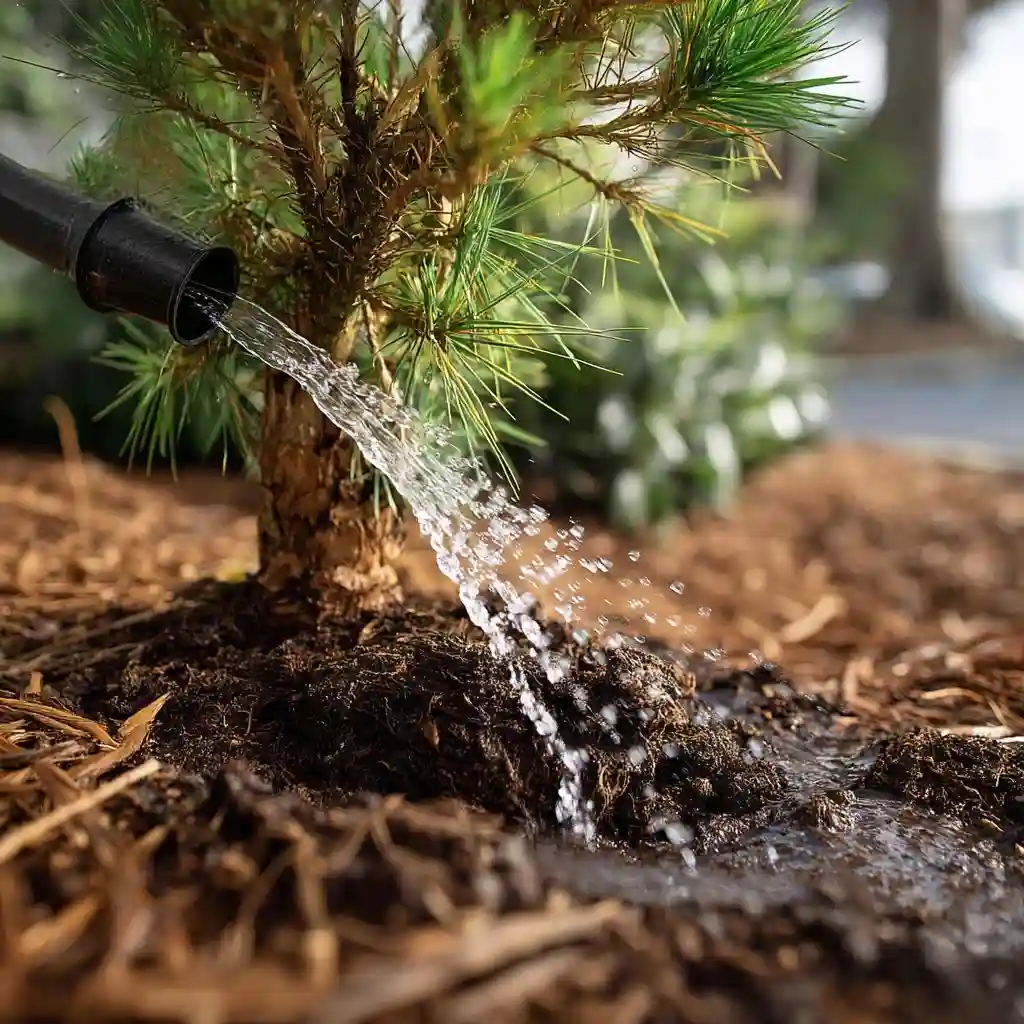
Watering and mulching play a critical role in caring for pine trees, especially during their first year. Young pines need consistent moisture to establish a strong root system, but they also hate soggy soil. The balance is key.
Watering Schedule for New Pines
- First 4 weeks: Water every 3–4 days unless it rains. The goal is to keep the soil moist, not soaked.
- 1–3 months after planting: Water once a week during dry periods.
- After year one: Most pines are drought-tolerant. Water only during extended dry spells.
Always water deeply at the base rather than giving the tree light, frequent sprinkles. Deep watering encourages roots to grow downward, anchoring the tree and improving drought resistance.
Smart Mulching Tips
A 2–3 inch layer of organic mulch—like pine bark, shredded leaves, or wood chips—helps retain moisture and regulate soil temperature. Spread the mulch in a wide ring around the base, but never let it touch the trunk, which can lead to rot or invite pests.
Proper watering and mulching early on will make caring for pine trees far less stressful in the years ahead.
Fertilizing (Usually Minimal)
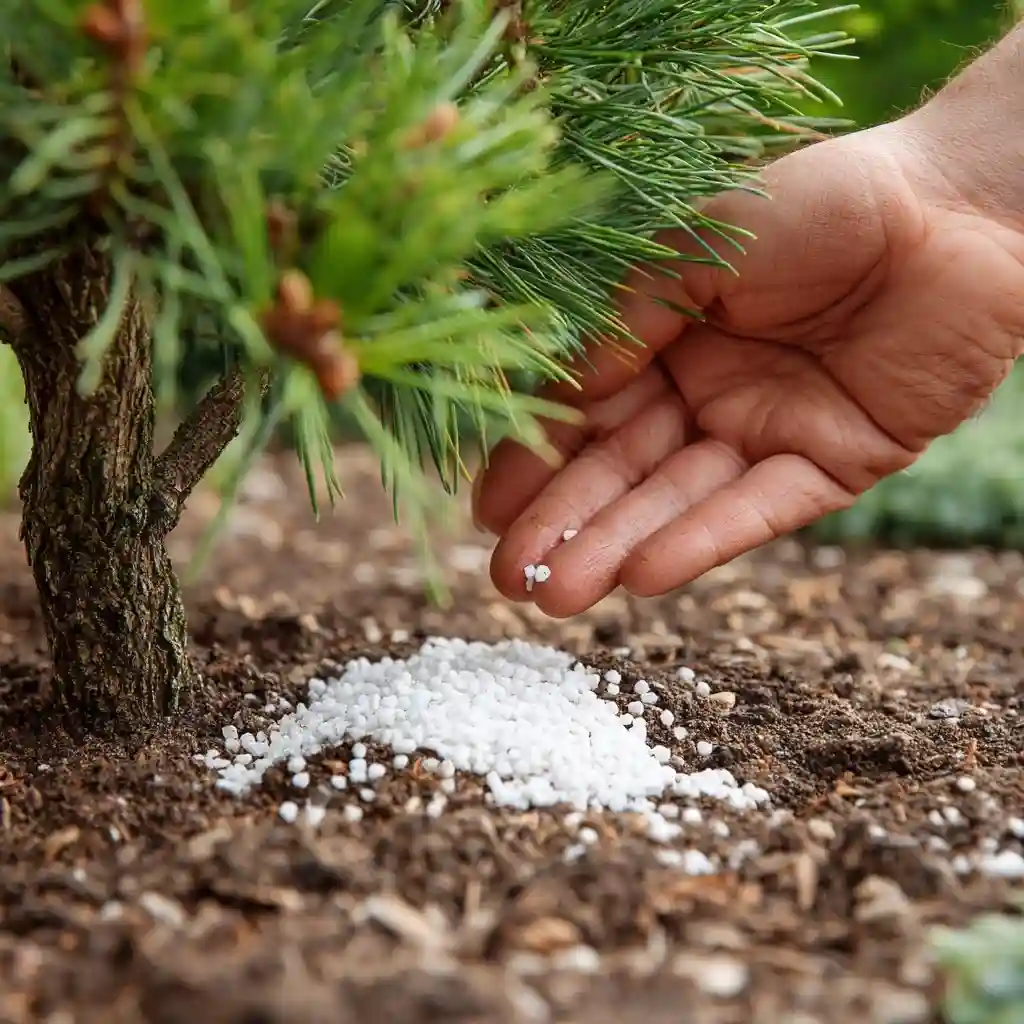
One of the easiest aspects of caring for pine trees is fertilizing—because in most cases, they don’t need much at all. Pines are naturally adapted to grow in low-nutrient environments, especially in forests where organic matter recycles itself through fallen needles and branches.
When to Fertilize Pine Trees
- Skip the first year. Let roots settle and adjust without the pressure of forced growth.
- Year two and beyond: Apply fertilizer only if growth seems slow, needles are pale, or your soil is particularly poor.
What Kind of Fertilizer to Use
- Use a balanced, slow-release fertilizer like 10-10-10 (Nitrogen-Phosphorus-Potassium).
- Apply 2 to 4 pounds per 100 square feet, depending on tree size.
- For older trees: Use 2 pounds of fertilizer per inch of trunk diameter, every other year.
Apply fertilizer in early spring, before new growth appears. Scatter it evenly around the drip line—the outer edge of the tree’s canopy—not directly against the trunk.
Over-fertilizing can harm pines, encouraging soft, weak growth that’s more susceptible to pests and weather damage. For most homeowners, light and infrequent feeding is all that’s needed in caring for pine trees successfully.
Pruning & Shaping Young Pines (Build a Strong Leader)
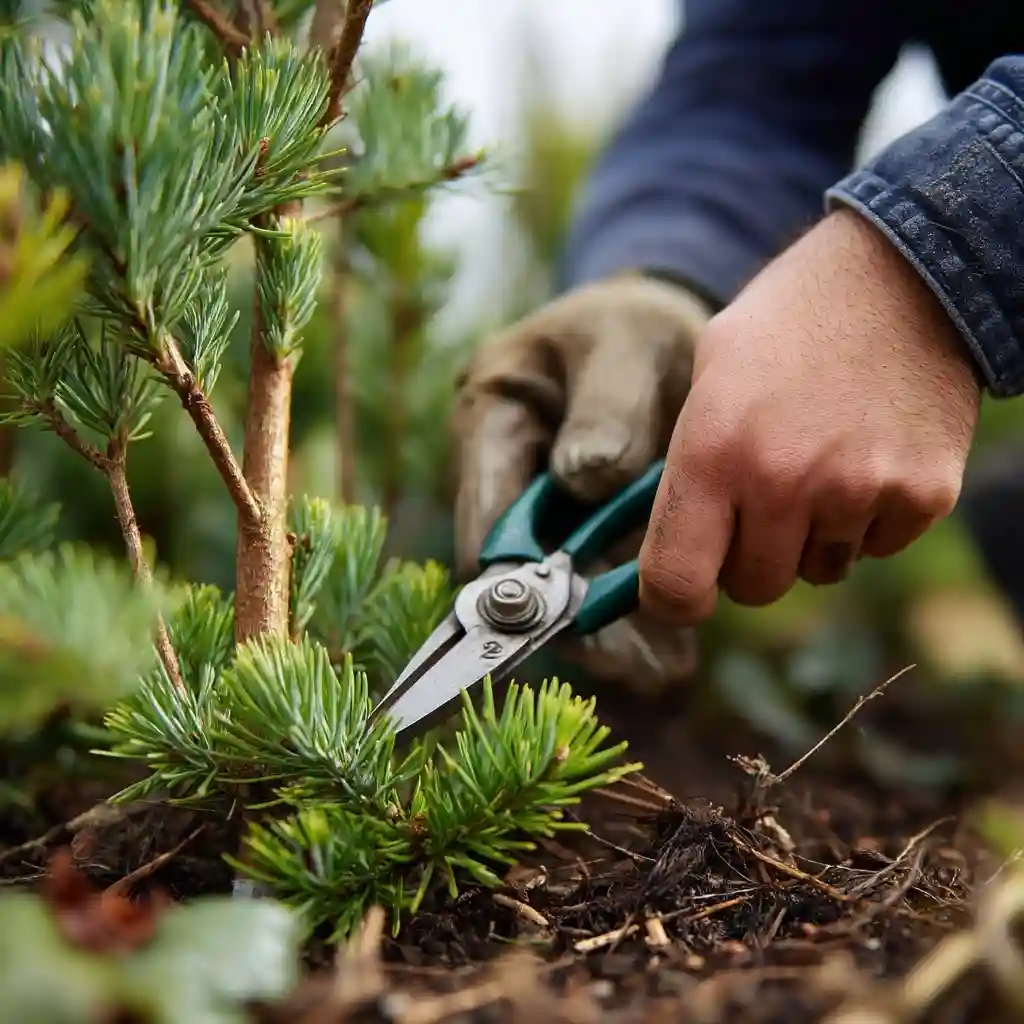
While mature pines rarely need pruning, shaping young trees is an essential part of caring for pine trees. Early, careful pruning helps form a strong central leader (the main vertical trunk) and prevents structural issues that can lead to breakage or imbalance later on.
Why a Strong Leader Matters
Pines grow best with a single, dominant central trunk. If two or more leaders compete, the tree can become weak and vulnerable to wind damage or splitting. This is especially important for tall-growing species like Eastern white pine or loblolly.
How and When to Prune
- Best time: Late winter to early spring, while the tree is still dormant.
- Use clean, sharp hand pruners or loppers to remove competing leaders and weak side branches.
- Avoid cutting into the central leader unless absolutely necessary.
- If candles (the soft, new shoots) appear too long, pinch them back by one-third with your fingers in late spring to control shape and size.
Avoid aggressive pruning. Pines don’t recover well from heavy cuts into old wood, and they rarely grow back from bare branches. Focus on subtle shaping, especially during the first 5 years.
This thoughtful approach to pruning early on will make caring for pine trees much simpler in the long run, as your tree will grow strong and balanced with minimal future intervention.
Common Problems: Poor Drainage, Over/Under-Watering, Browning Needles, Root Rot
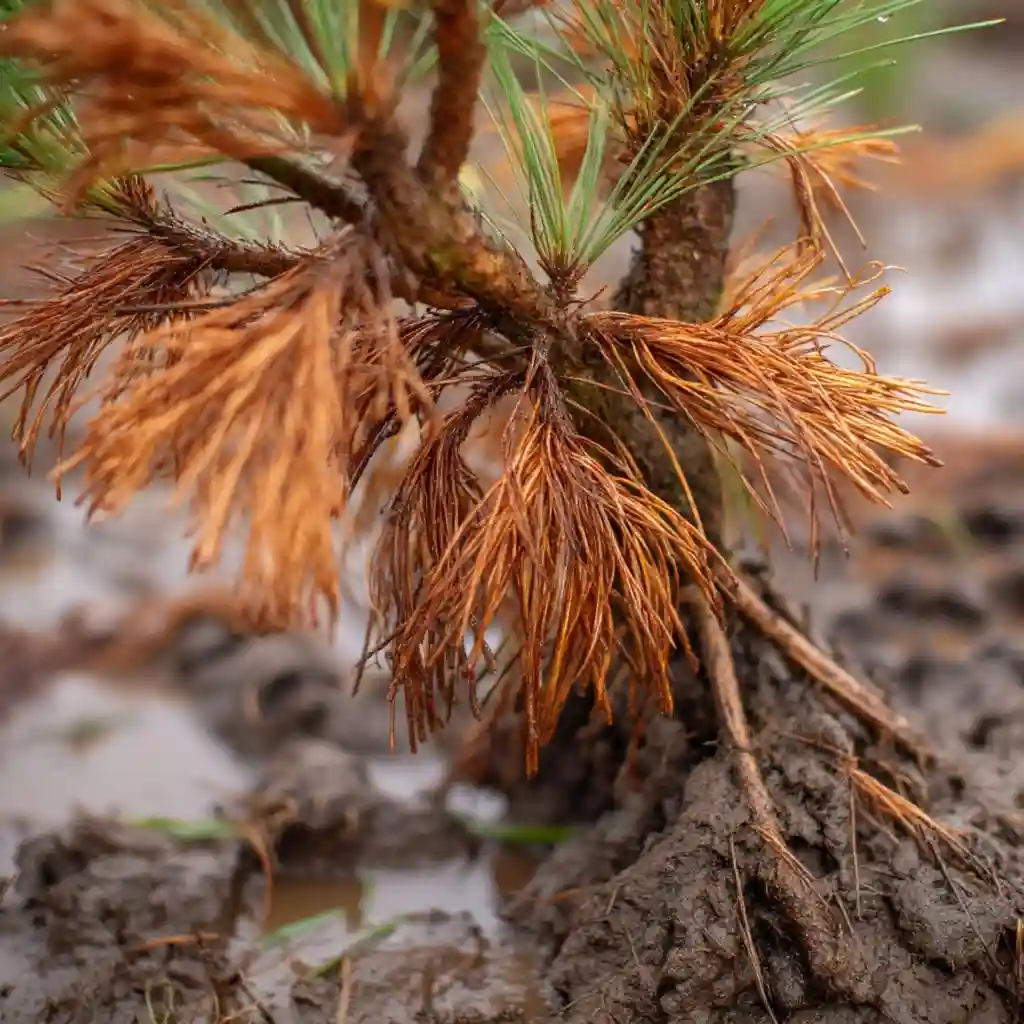
Even when done right, caring for pine trees sometimes means dealing with issues that show up months—or even years—after planting. The most common problems are usually tied to moisture imbalances or poor soil conditions.
1. Poor Drainage
If your soil holds water too long, roots can suffocate. Signs of poor drainage include:
- Yellowing needles
- Mushy soil around the base
- Slow or stunted growth
Solution: Improve drainage by elevating the planting site or mixing in coarse sand or compost before planting.
2. Over- or Under-Watering
Too much water can lead to root rot, while too little causes stress and needle drop.
- Over-watered pines show drooping or yellowing needles.
- Under-watered pines develop brittle, brown needles—especially at the tips.
Fix: Stick to a deep, infrequent watering schedule. Always check soil moisture before watering.
3. Browning Needles
Some browning, especially on older inner needles, is normal in fall. But widespread or sudden browning could mean:
- Root rot
- Fungal infections
- Drought stress
Tip: Check soil conditions, and remove dead needles if fungal disease is suspected.
4. Root Rot
Often caused by prolonged soggy soil, root rot can be fatal. Symptoms include:
- Wilting even when soil is moist
- Soft, dark roots
- Foul odor from the soil
Once advanced, it’s difficult to reverse. Prevention is key—start with well-draining soil and never overwater.
By staying alert to these early signs, you can catch problems before they become irreversible. A little observation goes a long way in caring for pine trees and keeping them healthy year after year.
Ongoing Maintenance Tips & When Pines Really Need Attention
Once established, pine trees are low-maintenance, but they’re not completely hands-off. A bit of seasonal attention will go a long way in caring for pine trees and preserving their long-term health.
Seasonal Pine Tree Maintenance Checklist
Spring:
- Inspect for signs of pests (like sawflies or pine beetles).
- Prune lightly if needed (never remove more than ⅓ of new growth).
- Apply mulch if it has thinned out over winter.
Summer:
- Water deeply during extended dry spells.
- Check for browning needles, which may indicate drought stress or pests.
- Avoid fertilizing during extreme heat.
Fall:
- Rake and compost fallen needles if you want a tidier yard—but remember, needles naturally mulch and nourish the soil.
- Inspect for fungal issues in wet climates.
Winter:
- Young trees may need windbreaks or burlap wraps in harsh climates.
- Avoid walking near frozen roots to prevent damage.
When to Take Extra Care
Even though pine trees are tough, they do require immediate attention if:
- Growth suddenly slows or stops
- Large branches die off
- Bark appears cracked or oozing sap
- The central leader breaks or splits
In these cases, a certified arborist may be needed to diagnose the issue—especially if pests or disease are suspected.
Routine care may be minimal, but timely intervention and yearly checkups are the secret to successfully caring for pine trees over the long haul.
Conclusion / Key Takeaways
Caring for pine trees doesn’t have to be complicated—especially when you start with smart choices at planting time. Choose a sunny, well-drained site, water properly in the first year, and avoid over-fertilizing. Shape young trees to promote strong structure, and stay alert to drainage issues and browning needles, which often signal moisture-related stress.
With a little early attention and seasonal check-ins, your pine tree can thrive for decades with minimal upkeep. Whether you’re planting a dwarf variety or a towering white pine, these care tips will keep your landscape healthy, green, and beautiful all year long.
FAQ
How often should I water a newly planted pine tree?
Water every 3–4 days for the first month to keep soil consistently moist. After that, reduce to once a week unless there’s rain. Deep watering is better than frequent light sprinkling.
Do pine trees need fertilizer every year?
Not usually. In most cases, pine trees only need fertilizer every other year—if at all. Use a balanced 10-10-10 formula and avoid fertilizing during the first year after planting.
Why are my pine tree needles turning brown?
Browning needles can be caused by overwatering, underwatering, fungal infections, or natural needle drop (especially in fall). Check soil drainage and moisture first, then inspect for pests or signs of disease.
When is the best time to prune pine trees?
Late winter or early spring is ideal—before new growth begins. Avoid heavy pruning, and never cut into old wood or remove the central leader unless absolutely necessary.
Can I plant pine trees near my house?
Yes, but give them space. Larger varieties should be planted at least 15–20 feet away from buildings or structures to accommodate mature roots and canopy spread.
🌿 Love gardening inspiration? Follow me on Pinterest for bold plant ideas, tips, and seasonal color!
More Posts

